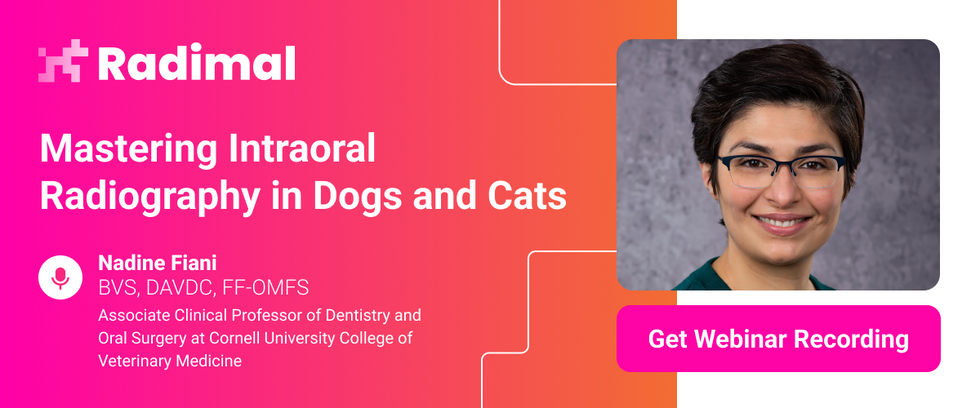Intraoral radiography is one of the most powerful tools in veterinary dentistry – and yet, it's often underutilized or misunderstood. In this session, participants will explore radiographic dental anatomy, review imaging techniques (including bisecting angle and parallel methods), and learn how to avoid the most common technical errors that limit diagnostic value. From recognizing subtle signs of periodontal and endodontic disease to identifying developmental abnormalities and oral pathology, this webinar provides a structured approach to interpreting dental radiographs with greater accuracy and confidence.
Whether you’re just getting started with dental imaging or want to sharpen your interpretive skills, this course will give you the practical knowledge to improve case outcomes, treatment planning, and client communication.
Learning Objectives
- Describe the benefits and clinical value of intraoral radiography in veterinary dentistry.
- Identify normal and pathological radiographic dental anatomy in dogs and cats.
- Apply principles of positioning and technique to obtain diagnostic intraoral images.
- Evaluate radiographs for common technical errors such as elongation, foreshortening, and cone cutting.
- Differentiate between anatomical, periodontal, endodontic, and other pathological findings using a systematic review approach.
- Interpret radiographic signs of dental disease and understand their implications for treatment planning.


